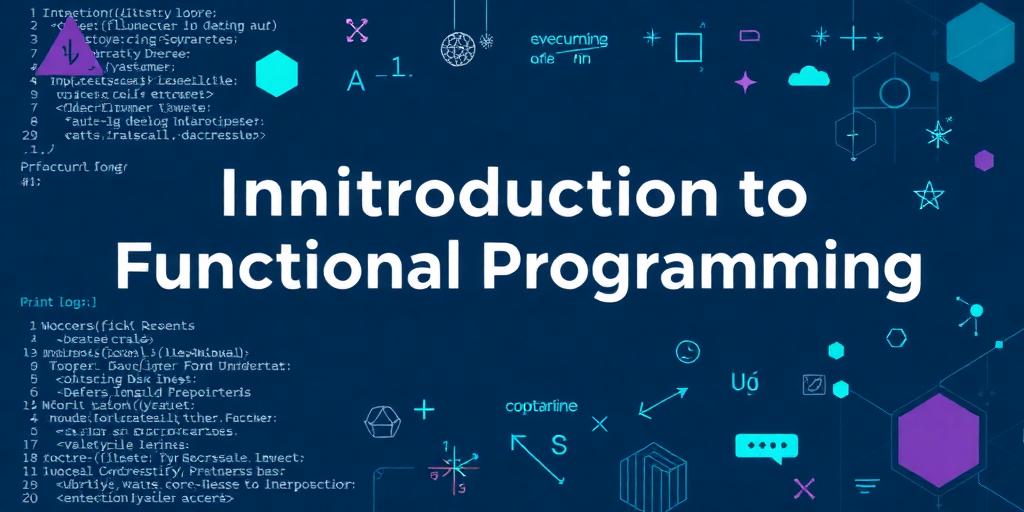An Introduction to Functional Programming
Functional programming (FP) represents a robust and increasingly relevant paradigm in software development. Unlike imperative or object-oriented approaches that focus on changing state, functional programming emphasizes computation as the evaluation of mathematical functions, avoiding mutable state and side effects. This fundamental shift in perspective offers significant advantages in building more predictable, maintainable, and concurrent applications.
What is Functional Programming?
At its core, functional programming treats computation as the evaluation of mathematical functions, aiming to build software by composing pure functions. This paradigm draws heavily from lambda calculus and mathematical function theory, providing a rigorous foundation for software design. The objective is to produce programs that are deterministic and free from unexpected side effects, enhancing overall reliability.
Core Principles of Functional Programming
Understanding functional programming concepts requires familiarity with its foundational principles. These tenets guide the design and implementation of functional code:
1. Pure Functions
A pure function is a function that, given the same inputs, will always return the same output, and produces no observable side effects. This means it does not modify any external state, nor does it rely on external mutable state. The inherent predictability of pure functions significantly simplifies testing and debugging.
2. Immutability
In functional programming, data is immutable. Once a data structure is created, it cannot be changed. Instead of modifying existing data, operations that would seemingly alter data return new data structures with the desired changes. This principle eliminates an entire class of bugs related to shared mutable state, particularly in concurrent environments.
3. First-Class and Higher-Order Functions
- First-Class Functions: Functions are treated as ordinary values. They can be assigned to variables, passed as arguments to other functions, and returned as results from functions. This flexibility is foundational to composing complex operations from simpler ones.
- Higher-Order Functions: These are functions that either take one or more functions as arguments or return a function as their result. Examples include
map,filter, andreduce, which enable powerful data transformations and abstractions.
4. Referential Transparency
An expression is referentially transparent if it can be replaced with its corresponding value without changing the program's behavior. This property is a direct consequence of using pure functions and immutable data. It enhances code readability and allows for easier reasoning about program correctness, as any part of the code can be understood in isolation.
5. No Side Effects
A crucial aspect derived from pure functions and immutability is the absence of side effects. A side effect occurs when a function modifies something outside its local scope or has an observable interaction with the outside world beyond returning a value (e.g., modifying a global variable, performing I/O, throwing an exception). Eliminating side effects leads to more predictable and robust systems.
Benefits of Functional Programming
The adoption of a functional paradigm yields several compelling benefits:
- Enhanced Predictability and Testability: Pure functions and referential transparency mean that given specific inputs, outputs are guaranteed, making unit testing straightforward and highly reliable.
- Simplified Concurrency and Parallelism: Without mutable state, race conditions and deadlocks become far less prevalent, as data cannot be concurrently modified. This inherently simplifies the development of concurrent and parallel applications.
- Improved Modularity and Reusability: Functions are self-contained and free from side effects, making them highly modular. This promotes reusability, as functions can be composed and combined in various ways without unexpected interactions.
- Greater Maintainability: Code written with functional principles tends to be more declarative and less prone to subtle bugs related to state management, leading to easier debugging and long-term maintenance.
Conclusion
Functional programming offers a powerful and elegant approach to software construction. By embracing pure functions, immutability, and higher-order functions, developers can craft systems that are inherently more predictable, easier to test, and robust in concurrent environments. While it represents a different way of thinking compared to traditional imperative styles, the benefits of functional programming are increasingly recognized as essential for building modern, complex software. Exploring this paradigm can significantly enhance one's capabilities as a software engineer.









